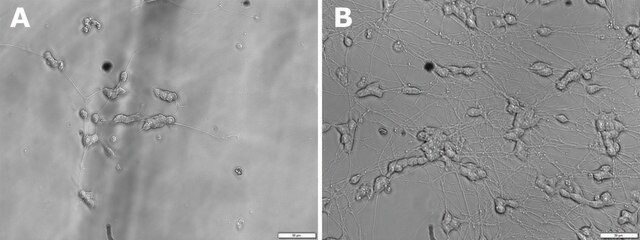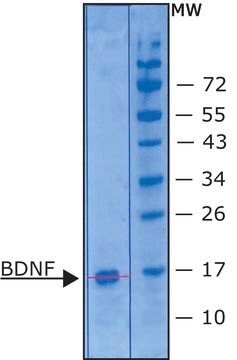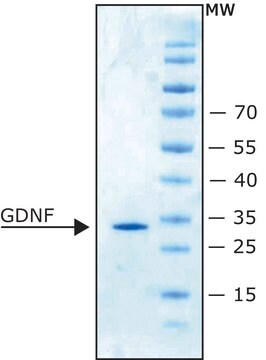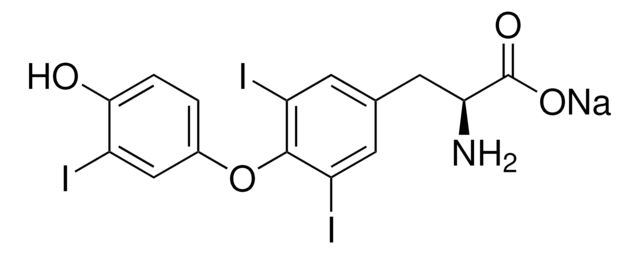C3710
Ciliary Neurotrophic Factor human
≥95% (SDS-PAGE), recombinant, expressed in E. coli, lyophilized powder, suitable for cell culture
Sinônimo(s):
CNTF
About This Item
Produtos recomendados
Nome do produto
Ciliary Neurotrophic Factor human, CNTF, recombinant, expressed in E. coli, lyophilized powder, suitable for cell culture
fonte biológica
human
Nível de qualidade
recombinante
expressed in E. coli
Ensaio
≥95% (SDS-PAGE)
Formulário
lyophilized powder
potência
≤325 ng/mL ED50 ((≥ 3.1 x 103 units/mg))
qualidade
endotoxin tested
peso molecular
22.8 kDa
embalagem
pkg of 10 and 20 μg
condição de armazenamento
avoid repeated freeze/thaw cycles
técnica(s)
cell culture | mammalian: suitable
Impurezas
≤10 EU/μg
nº de adesão UniProt
temperatura de armazenamento
−20°C
Informações sobre genes
human ... CNTF(1270) , CNTF (1270)
Categorias relacionadas
Descrição geral
Aplicação
Ações bioquímicas/fisiológicas
forma física
Nota de análise
Código de classe de armazenamento
13 - Non Combustible Solids
Classe de risco de água (WGK)
WGK 3
Ponto de fulgor (°F)
Not applicable
Ponto de fulgor (°C)
Not applicable
Equipamento de proteção individual
Eyeshields, Gloves, type N95 (US)
Escolha uma das versões mais recentes:
Já possui este produto?
Encontre a documentação dos produtos que você adquiriu recentemente na biblioteca de documentos.
Os clientes também visualizaram
Nossa equipe de cientistas tem experiência em todas as áreas de pesquisa, incluindo Life Sciences, ciência de materiais, síntese química, cromatografia, química analítica e muitas outras.
Entre em contato com a assistência técnica










